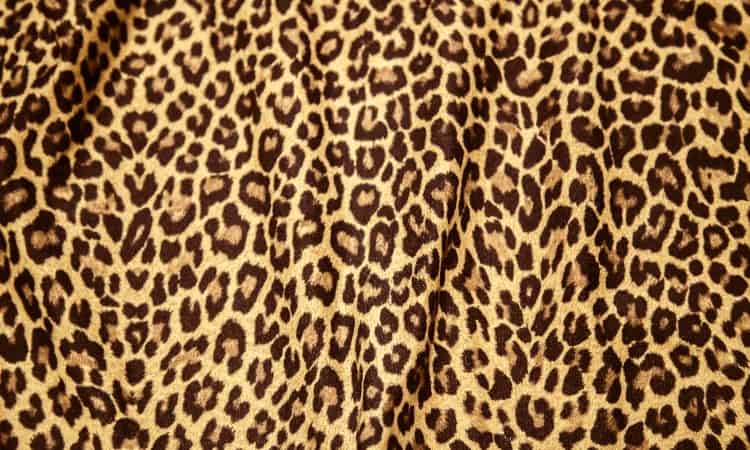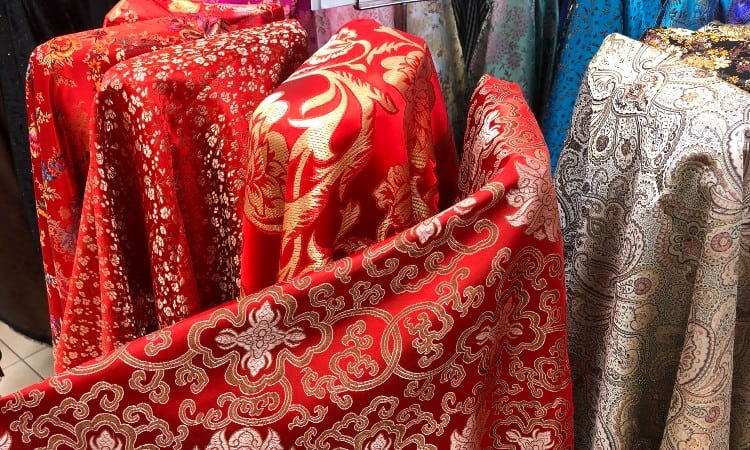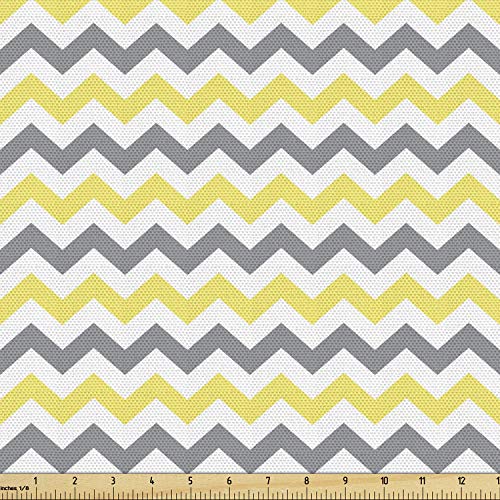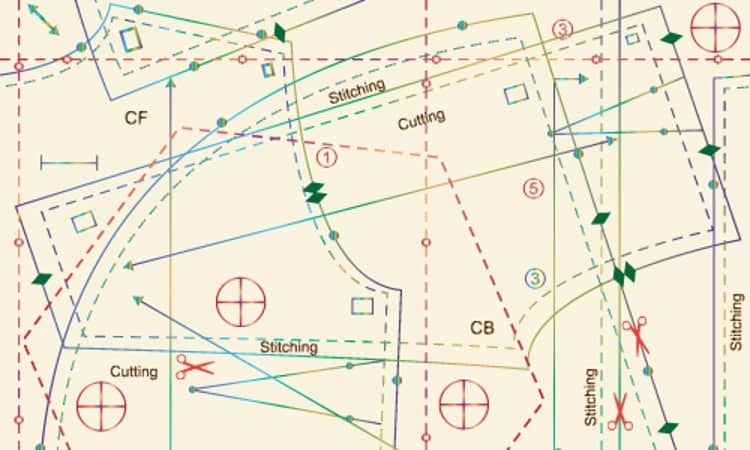When I was first learning how to sew my clothes, figuring out how to identify the different types of clothing patterns was the first challenge I had to overcome. Once I had managed to do that, I immediately launched into designing and sewing my garments using a variety of sewing patterns. This article is here to help you do the same.
When it comes to clothing patterns, there are many options to choose from. Some, like animal prints, floral patterns, or camouflage, are designed to mimic nature and other things seen in the wild. Others, like geometric designs, stripes, or checkered patterns, are meant to be a bit more abstract.
Whichever clothing patterns you encounter, this article is here to be your guide to identifying the different fabrics you see as you go about your day-to-day life. We’ll also discuss the basics of how to get started making your clothes in the comfort of your home.
What Are Common Types of Clothing Patterns?
A seemingly endless number of clothing patterns are available on the market today. Below is our list of the top patterns you will likely see daily.
Animal Prints

Animal print fabrics are carefully designed to mimic the look of animal furs or skins without using the actual skins themselves. Common designs mimic the look of tigers, leopards, cheetahs, zebras, giraffes, snakes, alligators or crocodiles, and even cowhides.
Most animal-inspired designs are printed onto the surface of woven fabrics, allowing them to be turned into virtually any style of clothing, home decor, or other goods made from fabric.
Basketweave
 Fabrics printed in a basketweave design are intended to look like the surface of wicker baskets, where thin pieces of wood are crossed over one another to create a tight weave. The fabric itself is not typically textured, but the careful way the color is printed or woven into the fabric can often give it the illusion that it is.
Fabrics printed in a basketweave design are intended to look like the surface of wicker baskets, where thin pieces of wood are crossed over one another to create a tight weave. The fabric itself is not typically textured, but the careful way the color is printed or woven into the fabric can often give it the illusion that it is.
Basketweave patterns are some of the more subtle options available on the market. They are a great way to add finer details to fabric without necessarily going for a bold or dramatic design.
Batik
 Batik patterns are typically very bold and colorful. These unique designs are created by carefully applying wax to fabric in decorative patterns before the fabric is dyed. Once the fabric is washed, the waxed areas will remain undyed, creating unique patterns.
Batik patterns are typically very bold and colorful. These unique designs are created by carefully applying wax to fabric in decorative patterns before the fabric is dyed. Once the fabric is washed, the waxed areas will remain undyed, creating unique patterns.
Often, batik designers repeat this process multiple times to create complex images. Truly handmade batiks are often one-of-a-kind and are a favorite for quiltmaking and sewing hippie-inspired clothing for those wanting a vibrant and carefree look.
Brocade

Brocade patterns are found on many different types of fabric, though traditionally, the style was primarily crafted with silk materials. Even when silk is not used, brocade is typically made from shiny materials that mimic silk, which is overlaid with elaborate floral, paisley, or fleur-de-lis designs. This pattern is known to be elegant and certainly would not be out of place in a palace or other royal setting.
While there are several styles of fabric that are as elaborate as brocade, one distinct feature that makes brocade easy to identify is that the designs are one-sided. The reverse side of brocade will often feature threads that stretch across the back to create the design on the front of the material. This makes the fabric good for things like upholstery, where the back of the fabric isn’t going to be visible to whoever sits on the furniture.
Camouflage
 Camouflage patterns come in various designs, all of which are intended to help disguise the wearer when they are out in the woods or other natural settings. Originally designed for the military and outdoorsmen, camouflage has become a popular choice for everyday wear indoors.
Camouflage patterns come in various designs, all of which are intended to help disguise the wearer when they are out in the woods or other natural settings. Originally designed for the military and outdoorsmen, camouflage has become a popular choice for everyday wear indoors.
While the most common pattern is made with forest green shades and the occasional brown, camouflage patterns have also been designed to mimic everything from snowy winter forests to deserts, bodies of water, or any other outdoor environment you may find yourself in.
These patterns can be abstract or digitally printed to look like detailed branches and leaves. You might even come across novelty camouflage patterns featuring bold colors like pink, teal, or lime green.
Checkered
 Checkered patterns are made by a series of alternating square blocks that repeat across the fabric’s surface. These patterns mimic a checkerboard or chessboard, which has helped to earn them their name. Checkered patterns can come in virtually any color combination, though black and white are perhaps the most famous combination you’ll see.
Checkered patterns are made by a series of alternating square blocks that repeat across the fabric’s surface. These patterns mimic a checkerboard or chessboard, which has helped to earn them their name. Checkered patterns can come in virtually any color combination, though black and white are perhaps the most famous combination you’ll see.
Just be sure you don’t confuse checkered patterns with their close cousins, plaid and gingham. Plaid and gingham contain at least three colors, two main colors and a third that is usually a blend of the first two. Checkered fabric usually only has two colors and does not feature squares that blend them.
Chevron
 Chevron patterns are widely used for home decor fabrics and the occasional clothing piece. This pattern is known for its characteristic zigzag stripes that alternate in color from row to row. Typically, one of the two colors will be white, while the other is often gray, dark blue, black, or another solid color.
Chevron patterns are widely used for home decor fabrics and the occasional clothing piece. This pattern is known for its characteristic zigzag stripes that alternate in color from row to row. Typically, one of the two colors will be white, while the other is often gray, dark blue, black, or another solid color.
Chevron comes in many different styles and can be tailored to suit many tastes. Some chevron patterns are bold and eye-catching, while others are subtle and offer a tiny bit of extra detail to your fabrics. Either way, this fun pattern is one you’re very likely to encounter as you shop at your favorite clothing store.
Damask
 Damask patterns are often mistaken for brocade patterns because the two fabric designs are very similar. Damask is also very elaborate and features intricate designs across its surface, like brocade. However, the texture of the damask fabric is generally much smoother than brocade because it features double-sided satin threads, whereas brocade designs are single-sided.
Damask patterns are often mistaken for brocade patterns because the two fabric designs are very similar. Damask is also very elaborate and features intricate designs across its surface, like brocade. However, the texture of the damask fabric is generally much smoother than brocade because it features double-sided satin threads, whereas brocade designs are single-sided.
When it comes to clothing, you might find a damask used to make formal gowns, suit jackets, or ties. This fabric is typically reserved for formal occasions and it is unlikely that you will see someone wearing damask clothing in a casual environment. However, when you see damask patterns, these bold and elegant designs will catch your eye!
Floral
 As the name might imply, floral patterns are any designs meant to mimic flowers, leaves, and other aspects of plants. These designs can be simple, featuring white flower designs on top of a solid background. They can also be very complex and can even be printed with fine details meant to look like real flowers across the surface of the material.
As the name might imply, floral patterns are any designs meant to mimic flowers, leaves, and other aspects of plants. These designs can be simple, featuring white flower designs on top of a solid background. They can also be very complex and can even be printed with fine details meant to look like real flowers across the surface of the material.
Floral designs are one of the classic stapes used to make fabric and have been for centuries. This timeless design can be found in everything from home clothing, shoes, and handbags to home decor fabrics. It’s one of the designs you probably see daily as you interact with other people or shop at your favorite store.
Geometric
 Geometric designs are deceptively simple and typically feature basic shapes like circles, triangles, squares, or stars that repeat over and over again on the fabric.
Geometric designs are deceptively simple and typically feature basic shapes like circles, triangles, squares, or stars that repeat over and over again on the fabric.
Geometric designs often feature bold colors that contrast with one another to make eye-catching designs. It’s a much more modern style of clothing pattern that you’ll find in many of your favorite clothing stores, especially those meant for younger shoppers.
Gingham
 If you’re a fan of the classic film The Wizard of Oz, you’ve probably seen gingham before. After all, the main character Dorothy’s dress is a perfect example of a gingham pattern. Gingham is known for its small checkered pattern that features two main colors separated by squares featuring a blend of the two main shades.
If you’re a fan of the classic film The Wizard of Oz, you’ve probably seen gingham before. After all, the main character Dorothy’s dress is a perfect example of a gingham pattern. Gingham is known for its small checkered pattern that features two main colors separated by squares featuring a blend of the two main shades.
How the colors are arranged on gingham can give the illusion that the two main color strips have been woven together. Where they would overlap if they were woven is where the color variation occurs. Even then, the color change is subtle and doesn’t stand out boldly – giving the overall look of a small, checkered design across the surface of the material.
Herringbone
 Herringbone patterns are a common clothing pattern that many people confuse with chevron despite the two designs being quite different. Herringbone is made by weaving together strips of fabric featuring diagonal lines, with each row alternating the direction in which the lines are angled.
Herringbone patterns are a common clothing pattern that many people confuse with chevron despite the two designs being quite different. Herringbone is made by weaving together strips of fabric featuring diagonal lines, with each row alternating the direction in which the lines are angled.
The overall design of this pattern is meant to mimic the bones of a fish – which is where it gets its name. It is a very subtle design, often made using two similar shades of gray or black that do not contrast sharply with one another. This pattern is often used in making suits, winter coats, and other similar garments.
Houndstooth
 The Houndstooth pattern is a unique fabric design often used to make jackets or suits. It can be loosely described as a checkered pattern, though each square has notched corners that give them more of an irregular shape. The squares are typically very small and add subtle detail to the overall look of the fabric.
The Houndstooth pattern is a unique fabric design often used to make jackets or suits. It can be loosely described as a checkered pattern, though each square has notched corners that give them more of an irregular shape. The squares are typically very small and add subtle detail to the overall look of the fabric.
Classic houndstooth fabric is made by alternating black and white shapes with one another, but more modern designs have embraced many different color options. Houndstooth can now be found in bold reds, pinks, greens, and virtually any other color imaginable. Regardless of the color, it is typically used to make suits, dress pants, and other formal clothing.
Paisley
 Paisley patterns are a very distinct look that is made by combining different elaborate, teardrop-shaped designs across the surface of the material. It is a very decorative design that originated in India and other Western countries before becoming a popular clothing pattern worldwide. The teardrop shapes are often mixed with flowers and other intricate designs to create bold fabric patterns that are guaranteed to catch your eye.
Paisley patterns are a very distinct look that is made by combining different elaborate, teardrop-shaped designs across the surface of the material. It is a very decorative design that originated in India and other Western countries before becoming a popular clothing pattern worldwide. The teardrop shapes are often mixed with flowers and other intricate designs to create bold fabric patterns that are guaranteed to catch your eye.
You’ll often see paisley used to make silk dress shirts for both men and women. It is also often a common design seen on women’s handbags and suitcases. Paisley is also one of the most common designs seen on bandanas and other head coverings.
Pinstripes
Pinstriped patterns are a very simple design with narrow stripes that break solid fabrics into even strips of color running vertically down the material. As the name implies, the stripes are very thin – often as thin as the head of a pin. The stripes will typically be lighter in color than the main color used in the fabric and are meant to subtly offset it.
Pinstripes are used to make all sorts of clothing, though they have remained one of the most popular choices for suits and dress shirts. The simple design is an easy way to add a bit of detail to these formal garments without creating a pattern that is too bold and distracting.
Plaid/Tartan
 Plaid or tartan patterns are a checkered fabric made by crossing horizontal and vertical stripes of colors to create unique designs. It is much more elaborate than true checkered fabric, however.
Plaid or tartan patterns are a checkered fabric made by crossing horizontal and vertical stripes of colors to create unique designs. It is much more elaborate than true checkered fabric, however.
Plaid typically features at least three colors of stripes in a range of thicknesses. You can typically see a blend of the original colors anywhere the stripes cross on the material, making plaid much more colorful and varied than simple checkered patterns.
Plaid is most famously associated with Scottish kilts and the colors used in the plaid were often associated with individual clans or families. It was often possible to identify the groups that someone belonged to simply based on the colors and styles of plaid they wore. Today, plaid has become a very common fabric used to make all sorts of clothing, pajamas, and other fabrics you encounter in your daily life.
Polka Dot
 Polka dot clothing patterns are fairly simple, featuring dots spread across the surface of a solid-colored fabric.
Polka dot clothing patterns are fairly simple, featuring dots spread across the surface of a solid-colored fabric.
These dots can be very small and subtle in appearance or very large and create a bold design.
Virtually any color combination can be used in these designs, creating a seemingly endless number of variations on this classic pattern.
Solids
With all of the elaborate clothing patterns we’ve discussed, we cannot forget about the most basic clothing design of all – solid colors. Solid-colored fabrics feature only one color and are consistent across their surface. This classic and timeless fabric choice can be used to create virtually any piece of clothing you would like.
For subtle variations, keep your eye out for ombre fabrics that feature a natural gradient of the same color. One side of these fabrics will start very light and gradually fade to a much darker version of the same color. It’s an excellent pattern for people who don’t want very bold designs but still want a bit more detail than what true solid-colored fabric offers.
Tie-Dye
 Last but not least, tie-dye patterns are made by carefully tying and arranging fabric into intricate designs before applying dyes to the material.
Last but not least, tie-dye patterns are made by carefully tying and arranging fabric into intricate designs before applying dyes to the material.
The dyes can be arranged in many different orders, which further helps to create a lot of variation in the final product. Truly handmade tie-dye fabric will be one-of-a-kind since it is unlikely that two pieces of fabric will be able to be folded in identical ways.
Tie-dye first rose in popularity in the 1960s and became heavily associated with hippies and other free-spirited groups. It often features bold rainbow designs and bright neon colors that are guaranteed to catch your attention. Even better, tie-dye is one of the few clothing patterns you can make yourself at home using simple kits from your local craft store.
How Do You Learn To Make Clothes?
Once you’ve learned the basics of identifying clothing patterns, you might want to learn how to make clothes of your own. Fortunately, you can learn this useful skill by following the step-by-step instructions you will find in a sewing pattern.
Sewing patterns are typically available at your local craft store or online. They will give you detailed instructions on measuring, cutting, and sewing your different fabrics to create the exact size and design of clothing you need.
Many sewing patterns are specifically designed for beginners, and an increasing number of online retailers are also creating videos showing you how to create your own clothing in the comfort of your home.
What Are The Different Types of Sewing Patterns?

There tend to be two different types of sewing patterns that you can commonly find and use. Traditional paper patterns are often sold at craft stores and other large retail chains. Digital patterns are alternatively available online from trusted retailers. Which you use will be entirely up to your own preference.
Traditional Paper Patterns
Traditional paper patterns come in a small envelope containing thin, tissue paper-like pattern pieces that you will cut out according to the size of clothing you intend to make. The pattern pieces can be laid on top of your fabric and traced so that you can cut the exact size and shape of the material you need to finish your project.
The envelope will also contain basic instructions on how to assemble your clothing once you have cut your fabric pieces. These instructions are often straightforward and won’t contain a lot of extra detail. However, many big brands responsible for producing traditional paper patterns have created online materials to make their products much easier to understand and use.
Digital Patterns
Digital patterns are available online and can be downloaded and printed using your home printer. They can also often be used with a projector if you want to project the pattern pieces directly onto your fabric rather than having to cut out and trace paper steps. Even better, you can typically print the digital patterns repeatedly, meaning that you can reuse these patterns more than once.
Many retailers who sell digital patterns often give you video tutorials as well as step-by-step instructions on how to create your final product. This makes digital patterns very easy to use, even if they require a computer and printer to get the actual pattern itself.
Which Sewing Patterns Are The Easiest?
There are many benefits to each type of sewing pattern, but my personal favorite is digital patterns. I prefer printing multiple copies of the patterns, which allows me to make clothing pieces in multiple sizes. This is an excellent option for sewers who plan to make children’s clothing, for example, where kids might grow out of one size quickly and need to move up to the next.
Traditional paper patterns are made with flimsy paper that tends to rip easily and doesn’t always hold up to being used multiple times. If you plan to use this pattern style, keep in mind that you will need to find a place to store the patterns once you are done with them. Digital patterns, by comparison, can be saved as a file on your computer and you can re-print them out as needed.
Conclusion
One of the most important things to learn about clothing patterns is how to identify the different common types by sight. Once you can do this, it is very easy to move on to designing your own clothes and making them yourself at home. This article is a handy guide you will want to keep around as you work towards creating new clothes for yourself.